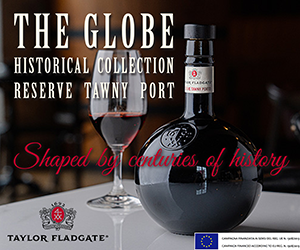Nature provided the backdrop, Chardonnay was the star Pitch - The nature of a wine production is first influenced by the ground, then the skies, then by mankind.
Nature provided the backdrop, Chardonnay was the star
Pitch - The nature of a wine production is first influenced by the ground, then the skies, then by mankind. In the style of another celebrated L.B. - the film director Luc Besson - Louis Bouillot invites you to discover the influence of these three elements in 2012 on the grapes of today, which will make the crémants of tomorrow - or rather 2014. A story in which Chardonnay plays the lead.
Synopsis - Opening shot: a flower suffering in the spring of 2012, with cold, damp conditions that lasted into July. This is followed by lots of shatter, the result of aborted flowers. The harsh scene continues with sharp temperature changes and constant damp encouraging mildew and powdery mildew, and certain sectors suffering frost or hail. The finale involves a hot, sunny August, culminating in harvests beginning on 12 September with ideal maturity of 10-11 degrees potential alcohol. How did the grapes that went through such a tormented season come out of it so well?
Locations - From the Châtillonnais region in the north to the southern reaches of Beaujolais, the immense area producing Crémant de Bourgogne offers many stunning locations. Soils types range from clay or limestone to granite, with all combinations in between. This profusion of terroirs influences the character of the Pinot Noirs and Gamays for the red grapes, and the Chardonnay and Aligoté for the whites, the main varietals. But this year, varietal is, for once, dominant over the terroir.
Action! Vines tend to thrive in harsh conditions, and one can already imagine they had their fair share in 2012. The director - here known as the enologist - will be looking for the purest of juices through an even more rigorous selection of cuvees this year, tasting the must direct from the press. The aim is to conserve the fruit's nature as fully as possible, and to eliminate all impurities. Another new technique being employed in the settling process is minimal contact between the selected juice and the lees (two hours instead of 24), to avoid bitterness. The exercise becomes more sophisticated every year, in a bid to capture the very essence of the fruit.
Star - Without doubt, it's Chardonnay! The most sought-after varietal, requested at every casting session the world over, has found its perfect role in Burgundy, where it can express depth, subtlety, and elegant sensuality in the white grand crus. The basis of blanc de blancs crémants, but also an essential component of blended sparkling wines, Chardonnay managed to survive the traumatism of this year's extremes. Very small bunches with perfect acidity were a key part of its beauty: very perfumed and with exotic fruit notes and a hint of grapefruit, lively, crisp, ideal for a great Crémant de Bourgogne. But such a scarce commodity, given the very low yields. As far as that goes, opinion in Burgundy is unanimous. Nature is capricious, and like a shooting star, we appreciate its moments of wonder, and always cherish it!
Make-up - None! A base wine naturally richer and more intense in fruit will no doubt allow for a lower dosage for the classic Louis Bouillot range. As for the "zero dosage" cuvées for the purists, they contain all the necessary elements to be magnified, their natural fruit promising to be enhanced by the second fermentation.
Release date: in two years. Be patient!

 quicksearch
quicksearch






